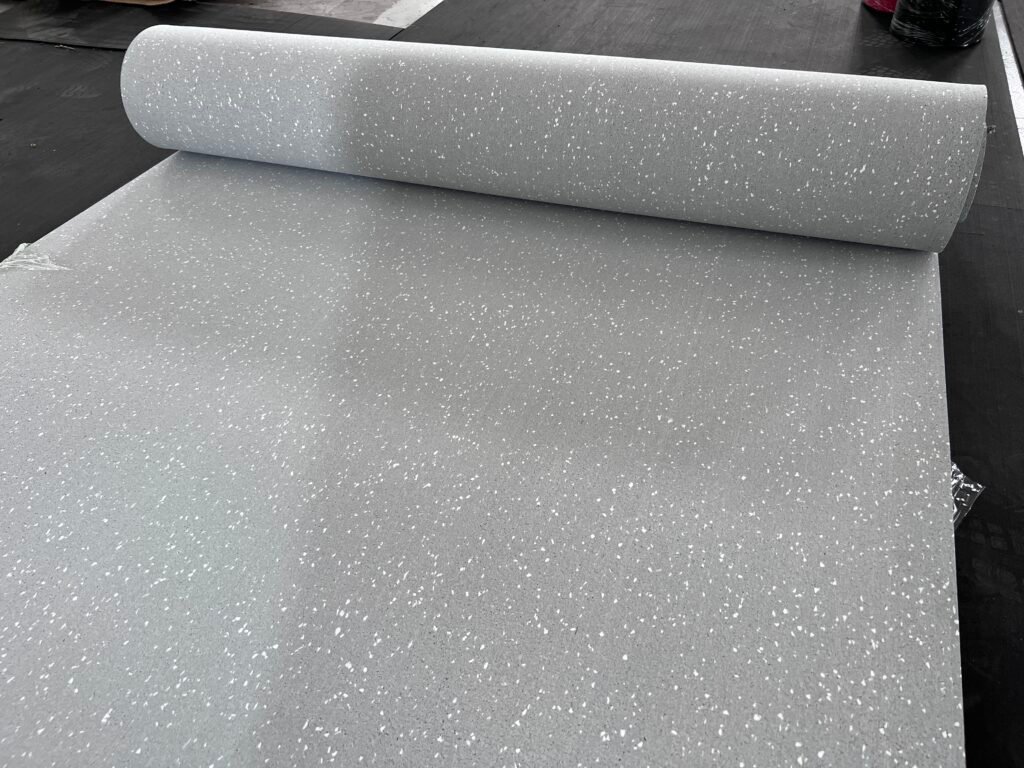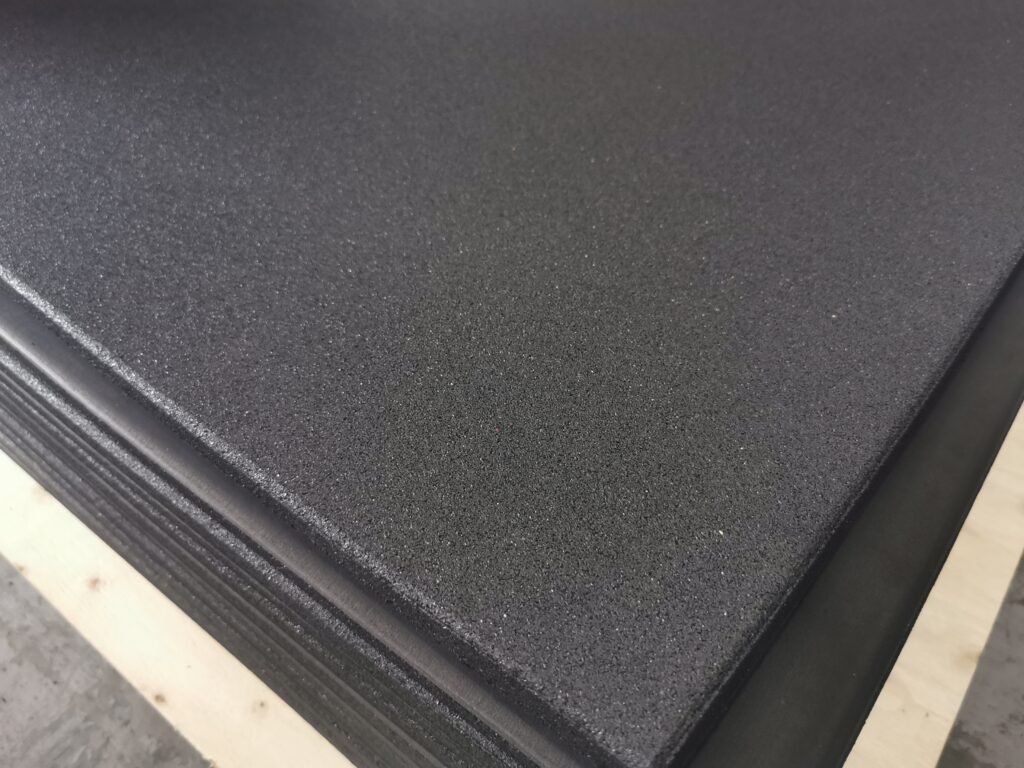Rubber matting is an intriguing contender in the vast world of flooring options. Whether you’re a homeowner pondering over a renovation, a gym enthusiast setting up a dedicated workout space, or a business owner aiming for durability and safety, the allure of rubber mats is undeniable. But as with all investments, one must ask: is it truly a bang for your buck? Dive into this comprehensive guide to unravel the costs, benefits, and practical insights about rubber matting and determine if it fits your needs.

Are Rubber Floor Mats Worth It?
When selecting the ideal flooring, especially for specific settings like gyms, garages, or even commercial establishments, one is often faced with many choices. Rubber floor mats have emerged as a popular pick, but the question remains: are they worth the investment?
Benefits and Uses of Rubber Floor Mats
Rubber floor mats have various benefits, making them a favored choice for multiple applications. Here are some of their standout advantages:
- Versatility: Rubber floor mats are not restricted to a particular setting. Whether setting up a home gym, designing a commercial workspace, or even considering flooring for a playground, rubber matting offers a solution. The foam tiles and horse stall mats are just two available options.
- Durability: Rubber is known for its resilient nature. Unlike other flooring materials that may wear out or get damaged quickly, rubber mats can withstand heavy foot traffic, weightlifting areas, and even harsh garage or industrial setting conditions.
- Safety: One of the primary reasons for their popularity in settings like gyms or children’s play areas is the anti-slip property of rubber. The textured surface ensures fewer chances of accidental slips or falls.
Factors to Consider: Durability, Safety, and Value for Money
While the benefits of rubber mats are clear, it’s essential to dive deeper into the core factors that determine their worth:
- Durability: As mentioned, rubber mats are built to last. However, their longevity can vary based on the quality and type of rubber used. Investing in heavy-duty rubber might have a higher initial cost, but it promises fewer replacements in the long run.
- Safety: Apart from being slip-resistant, rubber mats also provide cushioning. This feature is handy in weightlifting areas where dropped weights could damage regular floors. The cushioning effect reduces the impact, ensuring users’ safety and the floor’s longevity.
- Value for Money: When analyzing the cost-effectiveness of rubber mats, one shouldn’t just look at the upfront cost. It’s crucial to consider the lifespan of the mat, the safety it offers, and the potential savings from reduced damage to underlying floors. In many scenarios, especially in high-traffic areas or places with the potential for spills and stains, rubber mats can be a cost-saving solution in the long run.
In conclusion, while the initial investment in rubber floor mats might seem steep to some, their durability, safety, and overall value for money make them a worthy contender in the flooring market.

How Is Custom Rubber Matting Crafted?
The flooring world boasts many options, but rubber matting stands out for its unique blend of durability, versatility, and adaptability. But how exactly does a custom rubber mat come to life? Here’s a deeper look into the nuanced process behind its creation.
The Journey from Raw Material to Custom Mats
The Production Process:
1. Gathering Raw Material: Custom rubber matting begins with collecting suitable materials. Many manufacturers prioritize sustainability, utilizing recycled rubber derived from old automobile tires. This recycled material champions an eco-friendly approach and ensures great quality.

2. Material Preparation: It’s mixed with additives after cleaning the raw rubber. Whether aiming for floor protection or enhanced traction, the proper additives ensure the mat suits its intended purpose. Recycled materials, sometimes combined with vinyl or other compounds, offer durability and texture.

3. Molding and Shaping: The rubber undergoes different molding processes depending on the customer’s requirements, whether they need runner mats for long walkways or interlocking tiles for residential spaces. Custom cut mats, especially for unusual spaces, require very little technical knowledge but can be enhanced with features like beveled edges for added safety.

4. Setting and Finishing Touches: The rubber mats must be set once molded to the desired form. Here, vulcanization strengthens the material, ensuring durability and extra traction. Final touches can vary – from adding grip patterns suited for assembly lines to light textures ideal for indoor use.

Variations in Custom Rubber Matting:
- Custom Mats for Specific Uses: Mats come in various styles and widths, catering to distinct needs. Anti-fatigue mats, for instance, offer relief to workers on assembly lines, while “elephant bark” mats, thick and resilient, are perfect for heavy-duty applications.

- Runner Mats: Available in various lengths, runner mats provide protection and traction for walkways. Their size can be custom-cut, and styles vary, from a simple roll of rubber to intricate patterns.

- Maintenance and Cleaning: A standout feature of rubber mats is their ease of maintenance. Debris, dirt, and moisture can be shaken off, or a quick hose-down does the trick for more stubborn soil. Some might even have a double-sided tape feature for secure placement.
Incorporating rubber matting into a space isn’t just about floor protection; it’s about crafting a tailored experience. Whether you need individual mats with specific dimensions to cover the width of a door or an entire room or runner mats designed for commercial corridors, the versatility of rubber, combined with options like recycled rubber and custom styles, makes it an unparalleled flooring option.

How Does PVC Compare to Rubber Mats?
Flooring is pivotal in ensuring comfort, safety, and aesthetics in various environments- home gym floor or yoga studio. While rubber mats have long been popular, PVC (Polyvinyl Chloride) mats are also making a mark. Let’s dive deep into understanding how PVC stands against traditional rubber mats.
H3: “What Is the Difference Between PVC and Rubber Mats?”
Pros and Cons of Each Material:
- Rubber Mats:
Pros*: - Durability: Rubber mats, especially those made of heavy-duty rubber, are incredibly durable and can withstand heavy weights, making them perfect for weightlifting areas.
- Traction: They offer excellent grip, reducing the chances of slips and falls.
- Natural Feel: Rubber, especially from natural sources, can provide a softer, more organic feel underfoot.
Cons*: - Weight: Rubber mats are heavier, which makes installation more challenging.
- Cost: High-quality rubber mats can be on the pricier side.
- Odor: New rubber mats sometimes emit a strong smell, dissipating over time.
- PVC Mats:
Pros*: - Lightweight: PVC mats are generally lighter, making them easier to install and reposition.
- Water Resistance: PVC is impervious to moisture, making it ideal for environments exposed to water or other liquids.
- Affordability: They are often more affordable than their rubber counterparts.
Cons*: - Durability: While durable, PVC might not withstand hefty weights as effectively as rubber.
- Feel: PVC can feel harder under the feet when compared to rubber.
- Suitability for Different Environments:
- Home Gym Floor: Both materials are commonly used in home gyms. While rubber’s traction and durability make it a preferred choice for heavy workouts, PVC mats can be excellent for light exercises and are easier to move around.
- Yoga Studios: PVC is often preferred in yoga studios due to its lightweight and water resistance, especially when hot yoga sessions are in play. However, rubber provides a more natural grip, which many practitioners appreciate.
- Horse Stalls: Rubber is the definitive choice for horse stalls. Its durability and cushioning properties ensure comfort for the animals and longevity in the face of their weight and movement.
In conclusion, PVC and rubber mats have unique advantages and are tailored for specific uses. It’s essential to weigh the pros and cons concerning the intended application to make an informed choice.

Is Rubber Flooring Suitable for Gyms and Workout Areas?
When setting up a workout space, the flooring choice is paramount. It not only dictates the look and feel of the gym but also the safety and functionality of the area. Rubber flooring has emerged as a top contender in this space, but is it the right choice for you?
Is Rubber Gym Flooring Expensive Compared to Alternatives?
When determining the right flooring for your gym, cost-effectiveness is crucial. Here’s how rubber flooring stacks up:
- Rubber Gym Flooring: It can be moderately priced, but its longevity often makes it a valuable investment. Volume pricing can also be available for larger spaces.
- Artificial Turf: Often preferred for functional training zones or CrossFit gyms, artificial turf offers a different aesthetic and feel. It might be slightly pricier than rubber, with exceptionally high-quality variants designed for athletic performance.
- Traditional Gym Matting: Typically made from foam or lighter materials, traditional gym mats are usually less expensive upfront. However, they may provide a different level of durability than rubber, leading to more frequent replacements and potentially higher long-term costs.
In summary, while rubber gym flooring might have a steeper initial cost than some alternatives, its durability often translates to cost savings in the long run.

Can You Modify Gym Flooring?
Customizing gym flooring to fit your specific space or design can sometimes be necessary.
- How Do You Cut a Gym Floor Mat?: Cutting rubber flooring requires a sharp utility knife and a steady hand. While making straight cuts is easy, measuring multiple times is essential to ensure precision. If you’re cutting a thick gym mat, multiple, careful passes with the knife might be needed to achieve a clean cut.
- Challenges: One of the primary challenges when customizing gym flooring is maintaining the integrity and safety of the mat. Beveled edges might be needed to avoid tripping hazards after making cuts.
What Are the Benefits of Rubber Flooring in Weightlifting Areas?
Rubber flooring shines incredibly bright in weightlifting zones:
- Durability: Heavyweights significantly demand a floor that can withstand significant stress when dropped. Rubber flooring’s resilience ensures it isn’t easily damaged, chipped, or dented.
- Safety: With its excellent traction, rubber flooring minimizes the risk of slips, especially in high-sweat environments.
- Easy Cleaning: Post-workout sweat, dirt from shoes, or spills can be quickly wiped away from rubber floors, making maintenance a breeze.
- Shock Absorption: Rubber’s inherent properties provide a cushioned surface, benefitting joints and minimizing noise when weight drops.
Rubber emerges as a clear winner for anyone serious about weightlifting or wanting a lasting, safe, and low-maintenance flooring solution for their gym.

Rubber flooring is a formidable choice for gyms and workout areas, blending durability with safety and aesthetic appeal. Its versatility makes it suitable for various activities, from weightlifting to yoga, ensuring users have a comfortable and secure surface beneath them. While the initial investment might be higher than some alternatives, its longevity and ease of maintenance provide excellent value for money in the long run. In the world of gym flooring, rubber truly stands its ground.


